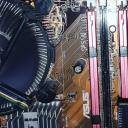How does WiFi router/Cell towers receive signal from personal devices?
-
Featured Topics
-
Topics
-
4
-
0
-
2
-
2
-
9
-
CDR_Xavier ·
Posted in Build Logs1 -
McBeth1087 ·
Posted in New Builds and Planning10 -
7
-
NamelessUser ·
Posted in Troubleshooting1 -
HereWeGo ·
Posted in Power Supplies3
-


.png.255947720031a641abdac78e663b681c.png)















Create an account or sign in to comment
You need to be a member in order to leave a comment
Create an account
Sign up for a new account in our community. It's easy!
Register a new accountSign in
Already have an account? Sign in here.
Sign In Now